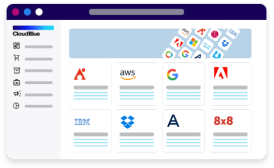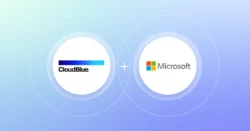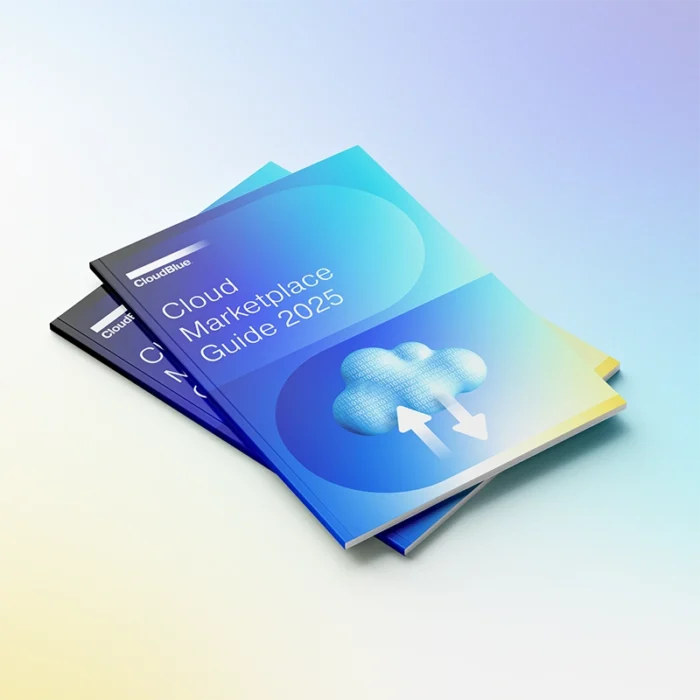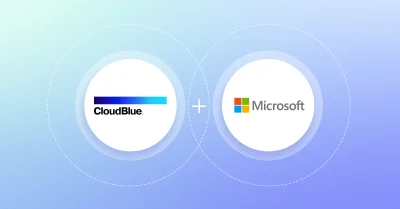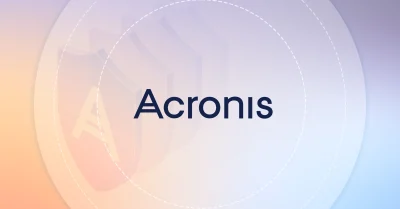Amid rising competition in the XaaS industry, Telecommunications providers, IT distributors, and ISVs are increasingly looking for ways to build “stickier, more profitable customer relationships.”1
One solution they are increasingly opting for is subscription-based XaaS marketplaces. By using this type of marketplace, businesses can bring their solutions directly to customers and additionally offer third-party solutions – all under usage-based billing. Equipped with automation tools, marketplaces enable scaling without significantly increasing costs or headcount. Simply put, the distribution model allows for selling more solutions to more customers.
However, building a marketplace is a complex endeavor. As Senior Analyst at Forrester, Joe Cicman, recently highlighted in a webinar with CloudBlue, in order to engage business buyers, firms must offer buyer-facing tools that resemble e-procurement and tools for sellers that optimize their business. Only two-sided technology makes it possible to offer results as a service by combining human services, remote monitoring, and digital services.2
Given this added complexity, most companies aiming for their own marketplace are looking for pre-built technology platforms. But, in considering which platform to invest in, companies must look closely at the different offerings, technical capabilities, and revenue growth models of leading platforms. For those seeking to build their own marketplace, it’s essential to make certain your specific needs are met.
Following this trend, it’s worth taking a closer look at the benefits of automated marketplaces and the differences in marketplace technologies.
The benefits of XaaS marketplaces
As digital transformation accelerates, the world is becoming increasingly accustomed to Amazon-like shopping experiences. That’s why, nowadays, customers looking for IT solutions are drawn to digital marketplaces. Customers desire simplicity and immediacy: marketplaces allow customers to buy, download and use their software applications all at once online and, therefore, at their convenience.
At the same time, XaaS solution providers are using these marketplaces to increase scalability and market penetration. The ability to integrate one’s own products and those of other providers on the same storefront makes it easier to offer consumer-oriented product bundles and all-inclusive contracts.
The direct benefits of XaaS marketplaces are many:
- Increasing average revenue per user (ARPU) with upsells and bundles
- Promoting loyalty with automated value-added offers
- Driving customer retention and tapping into predictable annual recurring revenue (ARR)
- Reaching new markets by harnessing the power of artificial intelligence and automation.
However, building, maintaining, and further evolving a fully-functional marketplace – especially when automating – can be a daunting undertaking. For that reason, most companies turn to technology partners offering advanced marketplace technology.
Finding the right technology platform in this space, though, is not a one-size-fits-all endeavor: MSPs, ISVs and IT vendors differ in terms of their XaaS solutions, growth stages, customer bases and goals. Hence, the market size, the types of products and services sold, the capabilities for integration with existing systems, and businesses’ plans for operations and locations influence vendor selection.3 So, what distinguishes each vendor?
Understanding the differences between marketplace technologies
One crucial aspect of what distinguishes each vendor is the technology they have built to empower marketplaces. Each technology offers essential capabilities and specific functionalities key to offering products and services as solutions via usage-based billing.
Let’s start with the basics. Product listing optimization, price and inventory management, reporting, and data tracking are all essential for a well-functioning and attractive marketplace. Most technology platforms offer these digital commerce capabilities via pre-built integrations with customer relationship management (CRM) platforms such as Salesforce or as full-stack, independent commerce platforms.
Next to the essentials, some providers’ platforms may offer distinct additional capabilities.
Front-end/back-end capabilities
- Self-service capabilities for customers
- Full-stack backend marketplace for managed services
- A combination of self-service and back-end technology to allow tapping into several customer segments
Automation capabilities
- Simpler solutions comprise automated product listing, price updates, and billing
- Advanced solutions offer complex automation of sales, procurement, billing, and multi-cloud orchestration for seamless usability.
Recently, n-tiered marketplaces have also become increasingly popular4 – for a good reason. Tiered marketplaces enable sales across multiple marketplaces serving multiple customer bases across third-party sites and countries via local currencies and languages. An excellent example is Cobweb, now offering services specifically for SMBs in several regions via its tiered marketplace.
In addition to the differences mentioned above, some technology platforms also go beyond technical capabilities by providing:
- Customer lifecycle management and support
- Go-to-market strategies and sales enablement
- Network of sellers/solutions from third-party vendors.
How to decide on a marketplace vendor
As Joe Cicman explains, the market is beginning to embrace outcomes as a service. Therefore, the combination of human services, remote monitoring, and digital services will continue to grow in importance.5
Those vendors offering this combination, categorized by Forrester as “New Wave”6, have built the next generation of advanced marketplace capabilities. Although the cost of such solutions that go beyond simple functions might be higher, they are a solid long-term investment, even for many mid-market and/or innovative companies in the XaaS space.
So, what’s the best vendor selling these cutting-edge solutions?
It often depends on the support system that the vendor offers. The perfect marketplace technology is ultimately the one that can be tailored to the demands of a company’s current growth phase and that provides just the right level of capabilities and support to move to the next growth phase. Whether you’re a software vendor with a small offering or already have thousands of XaaS products in the pipeline and are looking to expand into new continents, marketplace technology providers should understand and account for these differences.
Why CloudBlue is your best bet
CloudBlue operates under the motto “XaaS simplified.” As a marketplace platform looking to advance the digital transformation of the IT industry, our undertaking is to offer a differentiated set of solutions and technological capabilities and to bring them to our partners and their customers as seamlessly as possible.
With CloudBlue, technology integrators gain access to:
- Native support for complete customer lifecycle management and pre-built integrations with Microsoft Dynamics and CRM systems
- Products from 300+ vendors and the creation of custom packages to meet end users’ needs
- Streamlined multi-tier marketplaces and channel distribution to grow cloud revenue.
Gartner’s latest market report highlights that “CloudBlue offers a network of integrated sellers, making it easier for marketplaces to ramp up the listings quickly. In addition, CloudBlue has clients in a variety of industries, including IT distributors, telcos, and managed service providers (MSPs). The Commerce module allows the operator to manage taxonomy, orders, contracts, and billing, and multitier resellers to manage to sell to end customers.”7
We use such powerful technology because our mission is to provide simple, personalized XaaS. CloudBlue supports every business at its growth stage and offers custom solutions regarding technical capabilities, soft skills, go-to-market support, and customer lifecycle support.
Learn more about CloudBlue as a leader of XaaS.
References
1 (S&P & Posey, M. (2022, July, 18). Ingram Micro Cloud seeks to enable partners to play in the multi-cloud, as- a-service world. Market Intelligence.
2 CloudBlue Webinar: Building a Successful Digital Marketplace Strategy in the XaaS Economy
3 Gartner, Sandy, S., & Daigler, J. (2022, March, 14). Market Guide for Marketplace Operation Applications. 19.
4 (Gartner et al., 2022)
5 Forrester, Cicman, J., Bakalar, M., Johnston, K., & Wilson, K. (2021, October 7). Marketplace Development Platforms, Q4 2021. The Forrester New Wave, 36
6 Forrester, Cicman, J., Bakalar, M., Johnston, K., & Wilson, K. (2021, October 7). Marketplace Development Platforms, Q4 2021. The Forrester New Wave, 36.
7 (Gartner et al., 2022)

